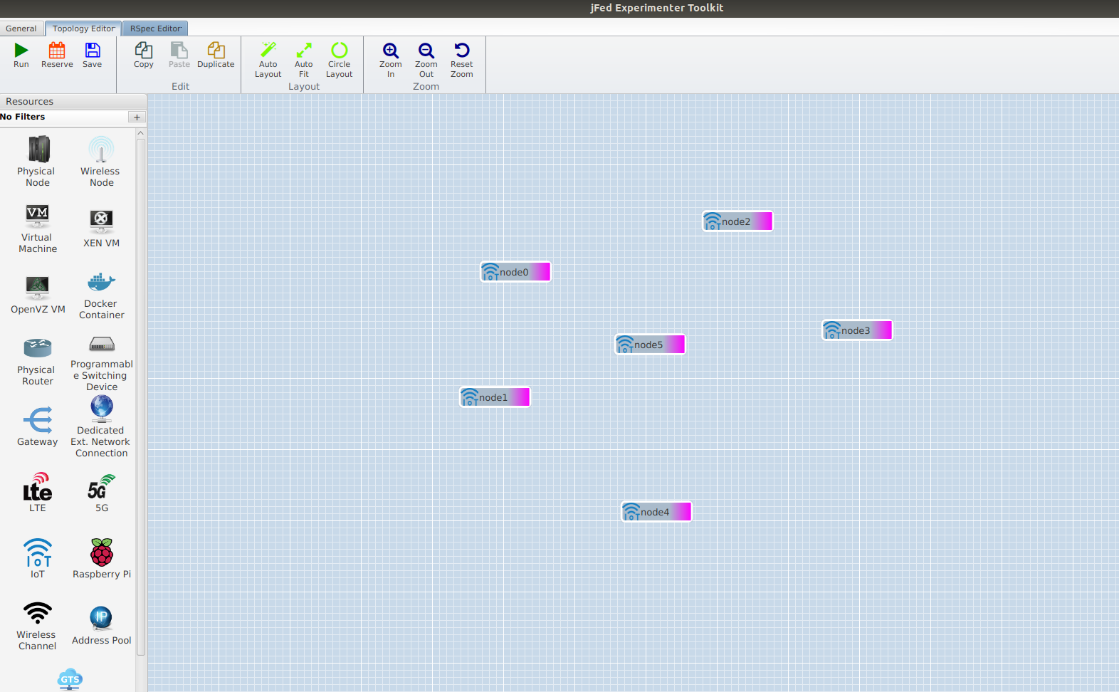This blog gives details of testbeds used in the large scale experiment performed under NGIAtlantic.eu project in closed partnership of asvin and East Carolina University. The project utilized 2 high computing testbeds namely, Virtual Wall testbed from Fed4FIRE+ and BRIDGES testbed funded by US National Science Foundation (NSF). Additionally, a hardware testbed was also setup at asvin premise for early testing.
asvin IoT Hardware Testbed
asvin setup an IoT hardware testbed in Stuttgart, Germany. The setup was comprised of 2 development boards ESP32 and OKdo E1. The OKdo E1 board is employed for SRAM PUF based key and Identity. The ESP32 board is used for wireless connection. It connects to the Internet using Wi-Fi and interact with asvin FUOTA platform and Auth server. It performs OTA updates and secure bootstrapping using PUF Id and key.
ESP32
The ESP32 board is widely used among IoT developers for prototyping. It is a single 2.4 GHz Wi-Fi and Bluetooth combo chip designed with the TSMC ultra-low-power 40 nm technology. It also houses Xtensa single/dual core 32-bit LX6 microprocessor 20 , up to 600 MIPS. It supports cryptographic hardware acceleration for AES, RSA, SHA-2, ECC and RNG. It has advanced peripherals interfaces such as GPIOs, SPI, I2C, I2S and UART.
OKdo E1
The OKdo E1 is an extremely cost-effective development board based on the NXP LPC55S69JBD100 dual-core Arm Cortex M33 microcontroller. It is packed with 320kB SRAM, 32kHz crystal for real-time clock, GPIO, UART. It also has CASPER Crypto co-processor to enable hardware acceleration for certain asymmetric cryptographic algorithms. It comes with ARM TrustZone, Floating Point Unit (FPU) and Memory Protection Unit (MPU). It is utilized for SRAM PUF for key generation, storage, and reconstruction.
Fed4FIRE+ Testbed
Fed4FIRE+ is an integrated project in European Commission’s framework program Horizon 2020, with largest federation of testbeds in Europe. The main objective of the project is to provide the testbeds to SMEs, research organisation and industries for research and experiments in the area of next generation internet. The Virtual Wall testbed facilitated by Fed4FIRE+ is utilized for this experiment. it is hosted at and operated by imec IDLabt ilab.t. The Virtual Wall 1 and 2 contain total of 206 nodes (pcgen1, pcgen2 nodes) and 159 nodes (pcgen3, pcgen4, pcgen5, and gpu-nodes), respectively. The nodes support multiple operating systems, e.g., Ubuntu, Fedora, Centos, FreeBSD, Windows7. It also offers network impairment (delay, packet loss, and bandwidth limitation) on links between nodes. It is implemented with software impairment.

BRIDGES Testbed
BRIDGES intends to deploy a 100 Gbps ring across the Atlantic Ocean connecting the United States and Europe with a dedicated network research infrastructure capable of supporting multiple, independent experiments with a flexible, agile service model. The ring BRIDGES has proposed here will consist of two trans-Atlantic waves, and two terrestrial-based waves. The southern “sea wave” will connect Washington DC (WIX, Level3) in the US with Paris FR (ParisOpen, Interxion); The northern wave will connect New York City (NYC, MANLAN) to Amsterdam (AMS, NetherLight). The four terminal nodes for these waves will be collocated with the Global eXchange Points (GXPs) to facilitate easy cross connects and easy access for global researchers. The BRIDGES nodes will be physically and administratively separate from the production networks/switching points in order to maintain the needed research flexibility. In Paris, BRIDGES will collocate at the Interxion facility with GEANT’s ParisOpen exchange point. In Washington, BRIDGES will locate at the Level3 facility in McLean, VA (inside the Beltway) at the WIX exchange point.






